After Automats Died in New York, They Flourished in the Netherlands
The “waiterless” restaurants were once iconic symbols of the Big Apple.
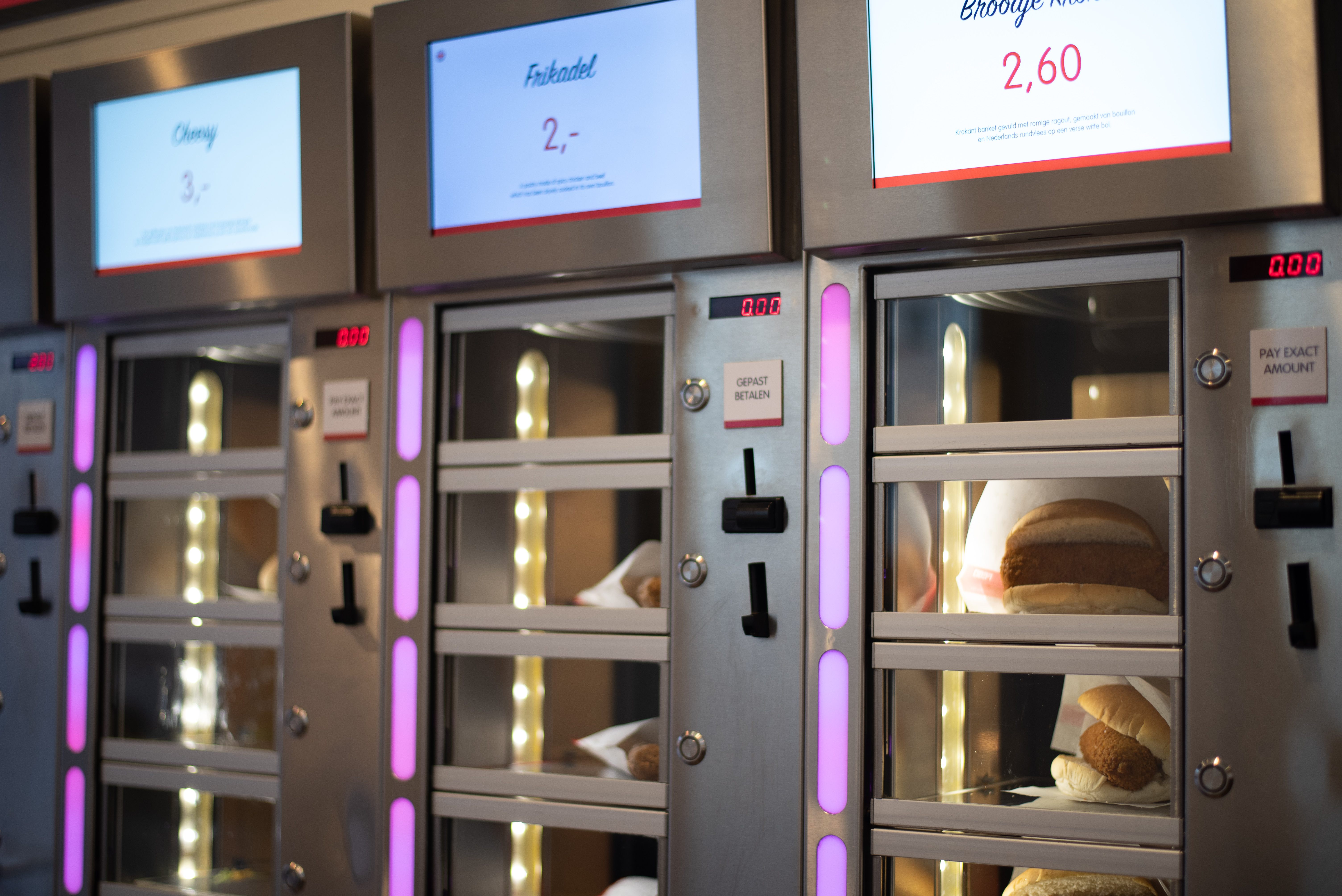
When envisioning culturally authentic food experiences, fast food chains don’t typically come to mind. But FEBO (pronounced fay-boh) is a must-see in the Netherlands. Finding one of the restaurants is easy, given their ubiquity throughout the Dutch capital of Amsterdam. Rather than a counter and cashiers waiting to take orders, walls of glass and steel contain little compartments filled with items from the menu. Customers simply come in, drop coins in a neighboring slot, and press a button to remove their dish of choice. Seamless and efficient, I couldn’t help but wonder why such a practical concept never caught on in the United States. As it turns out, it had—over 100 years ago.
The world’s first “automatic” restaurant—or Automat—was actually a German innovation, introduced in 1896. According to Automat chroniclers Laura Shapiro and Rebecca Federman, the interior of the Berlin restaurant was “a splendid dining room in the Art Nouveau style, lavishly appointed with mirrors, marble, and stained glass.” Yet customers selected their own meals from walls of glass containers: the Automat machines themselves. The novel technology gained traction across European cities over the subsequent years. Soon, the fad piqued the interest of American business partners Joseph V. Horn and Frank Joseph Hardart. In 1902, the two opened their first Automat, Horn & Hardart, in Philadelphia.

Customers swarmed to the restaurant to try this new method of dining. A testament to efficiency and convenience, diners selected their desired dish from the Automat, fed it a coin, and retrieved their meal. Workers beyond the wall then hastily replaced it with a fresh plate.
From its humble beginnings in Philadelphia, the Automat only grew. It should come as no surprise that a diner centered around efficiency, minimized human interaction, and an endless supply of freshly brewed coffee would find a steady foothold in New York City. On July 2, 1912, Horn & Hardart opened their first New York City location in Times Square, while inundating newspapers with advertisements heralding “The New Method of Lunching,” with an additional promise of “Try it! You’ll like it!”

Fortunately for Horn & Hardart, their advertisements proved prophetic. The chain’s popularity exploded over the next 40 years, at its peak serving roughly 800,000 customers a day. By the middle of the century, Horn & Hardart had over 50 locations in Philadelphia, and over 100 in New York City. Of course, sheer efficiency wouldn’t have been enough to keep customers coming back again and again—the food had to be worthwhile, too.
The menu of the standard Horn & Hardart revolved around home-style comfort food, with staples such as macaroni and cheese and baked beans. Another specialty was pies of all kinds, from savory chicken pot pie to decadent pumpkin pie topped with cream. Though a streamlined operation, the company baked all its pies the same day and offered fresh-squeezed juice. The coffee—Horn & Hardart’s most popular item—was brewed promptly every 20 minutes.
The Automat became such an integral part of New York dining that it seeped into the pop culture of the era. The 1962 Doris Day film That Touch of Mink, for instance, features a scene set in a New York Horn & Hardart. Not only that, writes Shapiro and Federman, but “when those glowing letters spelling ‘Automat’ appeared on a movie screen, everyone in the audience recognized a scene set in New York.” For a brief spell, Horn & Hardart was even the largest restaurant chain in the United States. The Automat’s place as a fixture of American life seemed secure.
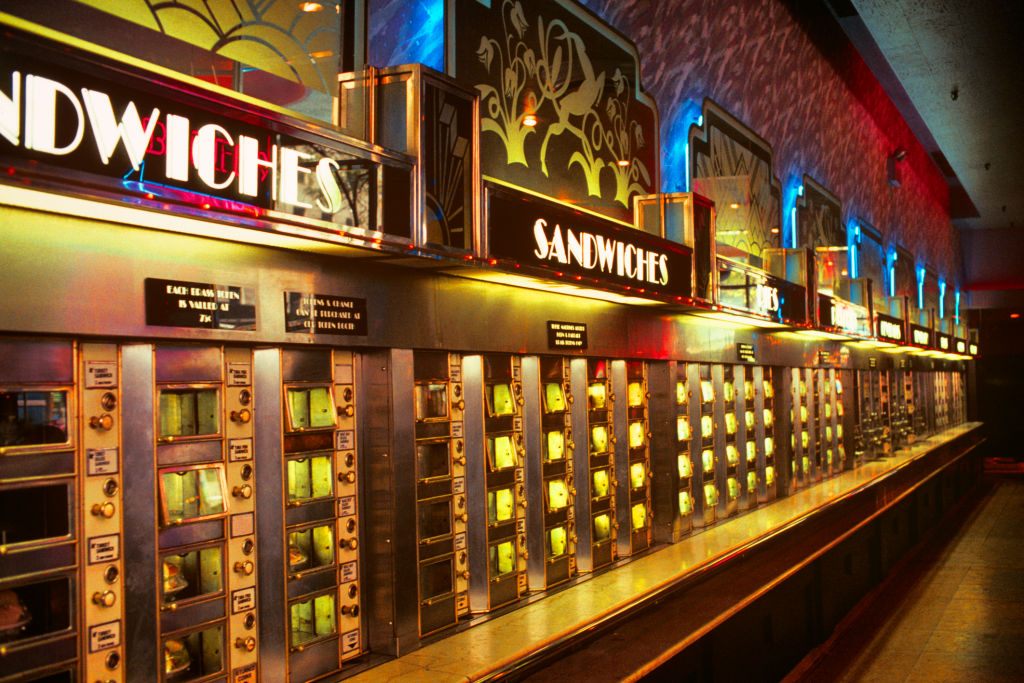
But today, the classic Automat is a distant memory. According to Paula Johnson, food curator at the Smithsonian National Museum of American History, a number of factors led to the institution’s long, painful decline. For one thing, American cities changed after World War II. People living in the suburbs didn’t frequent Automats for their evening meal, and the “new, high-rise office buildings that were constructed in cities often included a subsidized cafeteria,” Johnson says. Plus, by the second half of the 20th century, the hefty meals Automats offered fell out of favor. Instead, consumers opted for “the type of fare that fast food chains began featuring in the 1950s and ‘60s,” explains Johnson: less chicken pot pies, more burgers and fries.
Another unexpected culprit was a new tax on prepared food in New York. The Automat’s coin slots weren’t designed to accept the pennies necessary to make up the difference. Horn & Hardart began converting more of its locations to standard cafeterias, without the chrome and glass Automat machines. To combat the decline in sales, Horn & Hardart raised prices and lowered the quality of its food—a death blow to its inexpensive-yet-good reputation.

The very last Horn & Hardart in New York shut its doors for good in 1991. Those hoping to see the famous chrome-and-glass wall of pies and puddings would be disappointed to learn that one of the few remaining relics of the American Automat, a 35-foot long section of food compartments from the first Horn & Hardart, lies in storage at the Smithsonian National Museum of American History.
Though the American Automat went from revolution to museum relic, there have been a few attempts at reviving the model. In 2015, San Francisco-based company eatsa launched an automatic restaurant, serving food from a wall of compartments just like the Horn & Hardarts of old. Unfortunately, New Yorkers seemed less enamored with the idea this time around, with the Manhattan locations shutting down soon after opening.
With its decline in the United States, one can’t help but wonder why Automat-style restaurants managed to thrive in the Netherlands, of all places. Though the first FEBO restaurant was founded in Amsterdam by Johan Izaäk De Borst in 1941, the first FEBO Automat didn’t open until the 1960s. Why is it that, at the same time New York’s Automats faded, FEBO opened more and more locations?
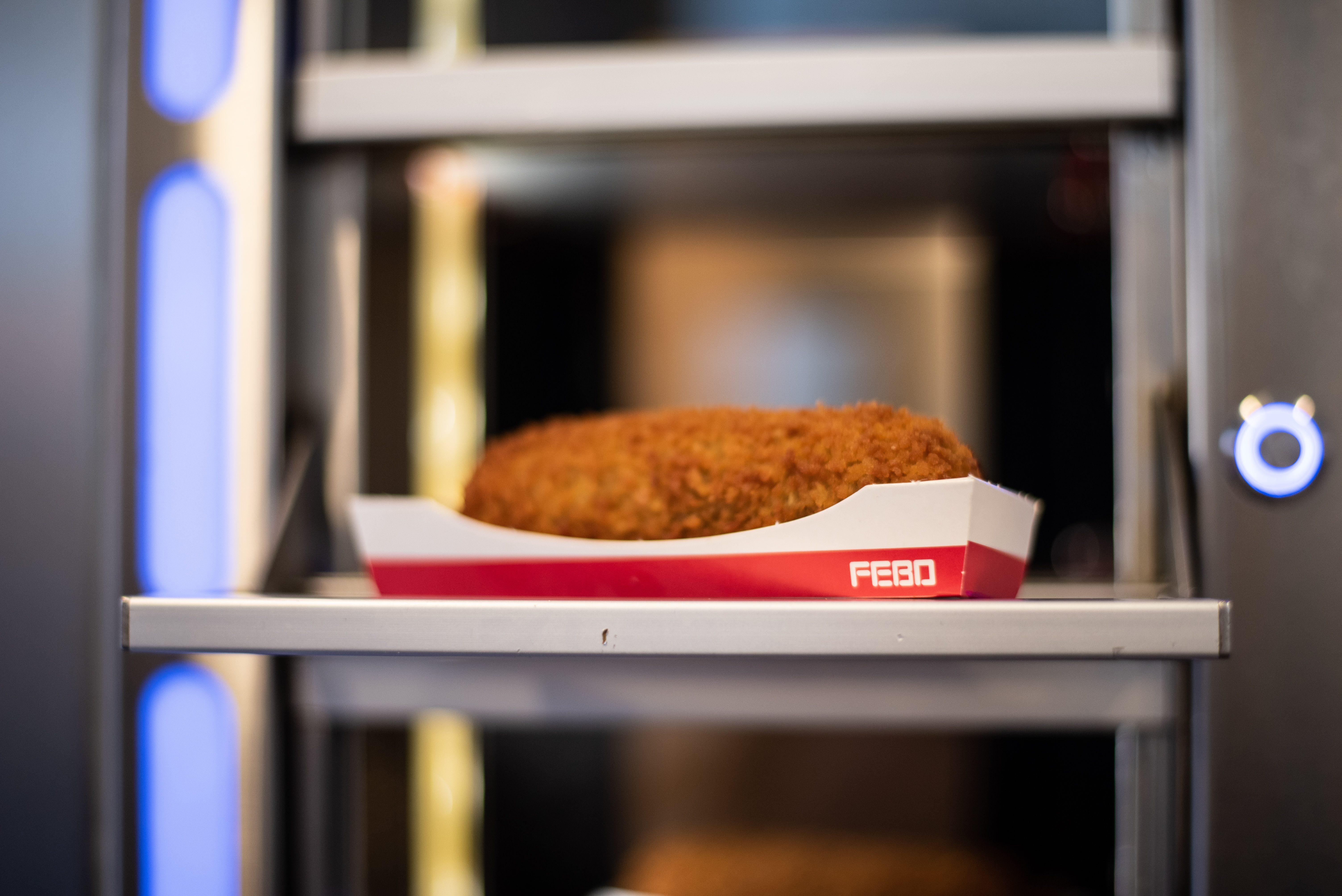
There are a few notable differences from the modern FEBO and the Horn & Hardarts of old. Far from the Art Deco stylings of the luxurious New York Automats, FEBO leans more into the slimmed-down aesthetic of a typical fast food restaurant, smaller in scale with bright white-and-red signage. Along with the decor, FEBO’s menu is more helpfully “on the go” than the hearty pies and burgundy-sauced beef of Horn & Hardart. FEBO sticks to burgers and fries, while the undisputed king of the menu, the Dutch Croquette, is a crispy veal dumpling similar to a hush puppy.
According to Dennis de Borst, current director of the company and the grandson of FEBO’s founder, the Dutch sense of urgency is another explanation for the restaurant’s enduring popularity. “The Dutch snack culture has been characterized in the past century by three basic elements: fast, accessible, and affordable,” de Borst says. “The Dutch are always on the move and often in a hurry.” To take advantage, FEBOs are often situated near major walkways and tram lines, anywhere “where many people work, seek entertainment, or pass,” he says.
In the end, though, it’s no Horn & Hardart. Perhaps with the advent of high-tech systems such as eatsa’s, Automat-style dining has new potential in the United States. But for those still inclined towards popping a coin in a slot and taking out a piping hot snack, a trip to the Netherlands is all it takes.
Gastro Obscura covers the world’s most wondrous food and drink.
Sign up for our regular newsletter.




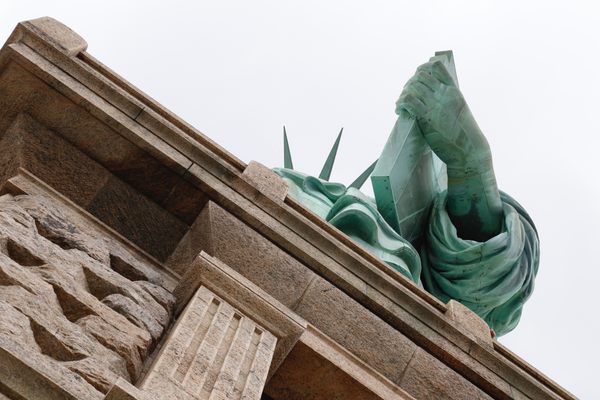




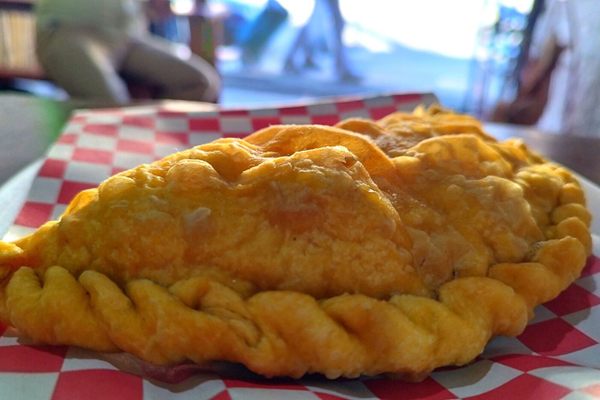



























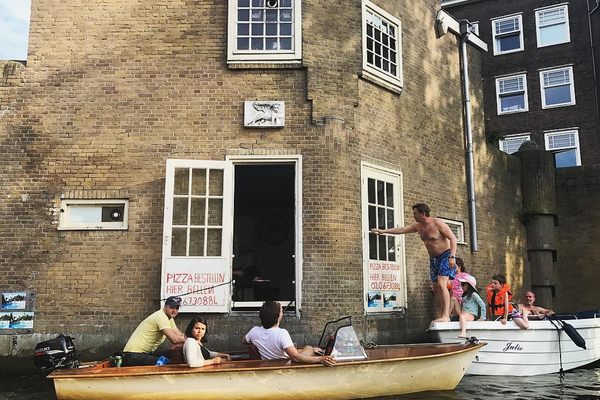


Follow us on Twitter to get the latest on the world's hidden wonders.
Like us on Facebook to get the latest on the world's hidden wonders.
Follow us on Twitter Like us on Facebook